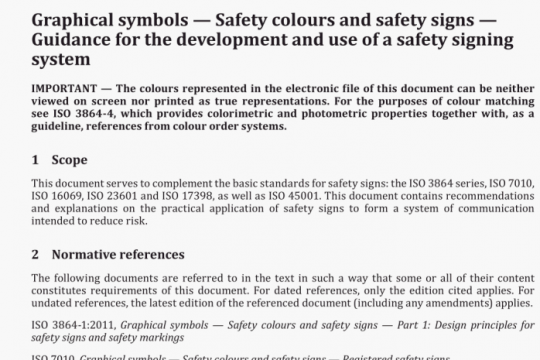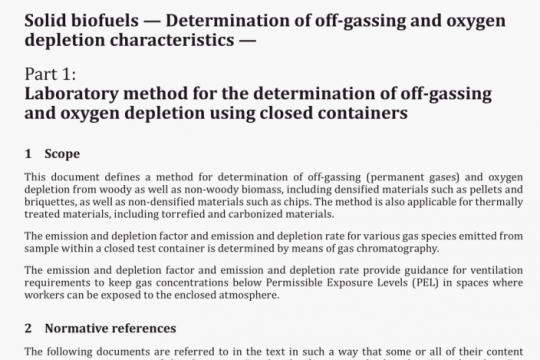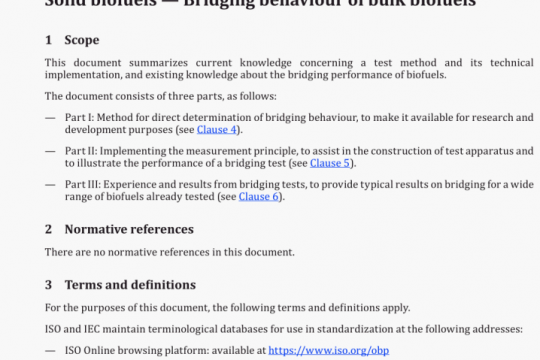ISO 22733-1 pdf free download
ISO 22733-1-2021 pdf free download.Road vehicles – Test method to evaluate the performance of autonomous emergency braking systems一 Part 1: Car-to-car.
7.1 General
The test conditions shall be in accordance with Iso 15037-1:2019, Clause 6, unless otherwise specified below.
7.2 General data
General data on the test vehicle and test conditions shall be recorded as specified in ISO 15037-1:2019,
6.4.1.
7.3 Test track
Conduct tests on a dry (no visible moisture on the surface), uniform, solid-paved surface with a consistent slope between level and 1 %. The test surface shall have a minimal peak braking coefficient (PBC) of 0,9.
The surface shall be paved and shall not contain any irregularities (e.g. large dips or cracks, manhole covers or reflective studs) that may give rise to abnormal sensor measurements within a lateral distance of 3,0 m to either side of the theoretical path line and with a longitudinal distance of 30 m beyond the position of VUT/EVT at the end of the test.
Lane markings are allowed. However, testing may only be conducted in an area where typical road markings depicting a driving lane may not be parallel to the test path within 3,0 m either side. Lines or markings may cross the test path but may not be present in the area where AEB activation and/or braking after FCW is expected.
7.4 Weather conditions
Conduct tests in dry conditions with ambient temperature above 0 °C and below 45 °C.
The surface temperature of the test track shall be between +10 °C and +50 °C.
No precipitation shall be falling and the horizontal visibility at ground level shall be greater than 1 km. Wind speeds shall be below 5 m/s to minimise EVT and VUT disturbance.
Natural ambient illumination shall be homogenous in the test area and more than 1 000 lx for daylight testing with no strong shadows cast across the test area other than those caused by the VUT or EVT. Ensure testing is not performed while driving towards or away from the sun when there is direct sunlight.
Measure and record the following parameters preferably at the commencement of every single test or at least every 30 mm:
1) ambient temperature in °C; track temperature in °C;
3) wind speed and direction m/s;
4) ambient illumination in lx.
Weather conditions are based on ISO 21994. For some proving grounds where the lower limit of ambient temperature of 0 °C is difficult to achieve, a lower value can be adopted. However, in that case, the lower limit values shall be reported.
7.5 Surroundings
Conduct testing such that there are no other vehicles, obstructions, other objects or persons protruding above the test surface that may give rise to abnormal sensor measurements within a lateral distance of 3,0 m to either side of the test path and within a longitudinal distance of 30 m beyond the position at which the test finishes. Test areas where the VUT needs to pass under overhead signs, bridges, gantries or other significant structures are not permitted.
The general view ahead and to either side of the test area shall comprise of a wholly plain man made or natural environment (e.g. further test surface, plain coloured fencing or hoardings, natural vegetation or sky) and shall not comprise any highly reflective surfaces or contain any vehicle-like silhouettes that may give rise to abnormal sensor measurements.
7.6 VUT
7.6.1 General vehicle condition
The VUT condition shall be in accordance with the vehicle manufacturer’s specifications, particularly with respect to the suspension geometries, power train (e.g. differentials and locks) configuration, and tyre fitment.
7.6.2 AEB system settings
If different settings are available, a setting shall be selected and finally reported. This setting shall not be changed until the entire test procedure is completed. The test procedure can be repeated for different settings if needed.
The AEB test protocol defined by EuroNCAP provides the following instruction for the AEB setting selection.
Set any driver configurable elements of the AEB and/or FCW system (e.g. the timing of the collision warning or the braking application if present) to the middle setting or midpoint and then next latest setting similar to the examples shown in Table2.ISO 22733-1 pdf free download.




